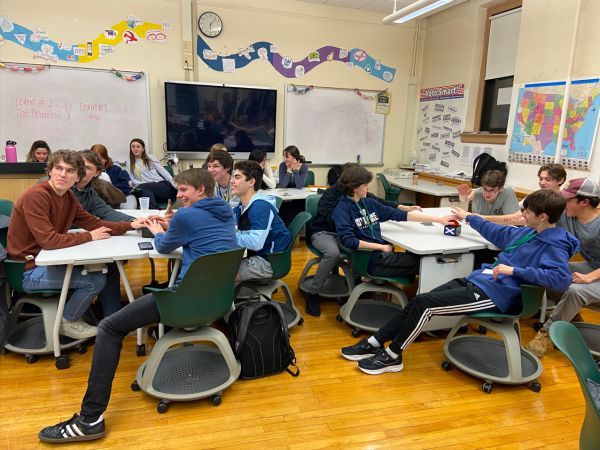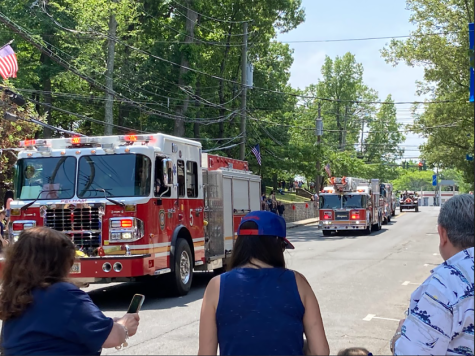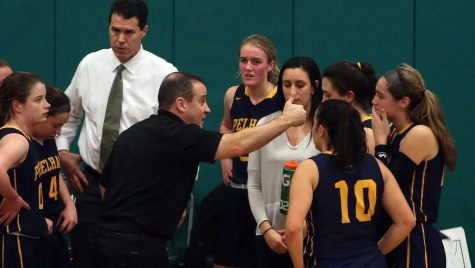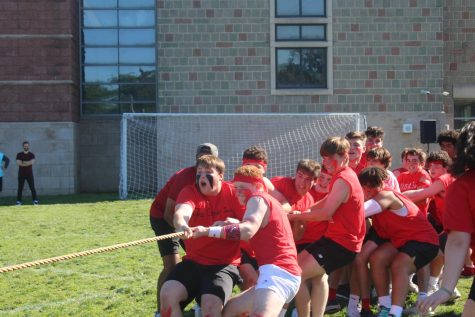BOE Holds Meeting Regarding Return to Full In Person Learning
March 15, 2021
Superintendent of schools, Dr. Cheryl Champ, has recently announced the district’s plans to move towards a full time in-person learning environment this spring. This plan was further detailed and expanded on during the board of education meeting on March 10. This agenda is expected to go into effect on April 12 for the elementary schools and potentially during late April for the middle and high schools. Dr. Champ emphasized that although more students would be allowed in the building at once, the normal pattern of school days would still not be restored.
This new plan entails a slightly longer school day while keeping the time between classes at five minutes to allow for staggered dismissals. With a longer school day, the academy period in the middle and high school will be shortened from 35 minutes to 20 minutes. However, an in-person academy option for fully in-person students could be implemented. In addition to the longer school days, the half days on Wednesdays during a full five day week will be kept to allow for cleaning of the school and a screen break for fully virtual students. Most notably for this plan to go into effect, the minimum social distancing length will be cut down from six to three feet. Additionally, each classroom will be equipped with a fan and an air purifier to reduce the spread of germs.
Dr. Champ also outlined a new Surveillance Testing Program using rapid tests to measure positivity rates following the transition to full time in-person. The increased testing rates will help determine if larger classroom populations are contributing to a higher number of cases at PMHS.
With regards to these tests, Dr. Champ said, “Our goal is to test 20 percent of students and staff district-wide, monthly.” Champ also emphasized that the tests are “non-invasive and simple.”
One potential risk that was highlighted during the meeting was the overcrowding of hallways in between class periods. In a typical school year, the hallways are normally very congested with students shoulder-to-shoulder as they move to their next period class. However, with the hybrid model, the lower daily student population has helped to keep the hallways less crowded, providing for a more COVID-19 safe environment. While desk shields will continue to be a crucial part of everyday life at PMHS, they pose no solution as the students walk to their next classes. One way this problem is planning to be tackled is by taking advantage of the five minute grace period between classes and implementing a staggered dismissal time for the students.
Another problem that the district could face once more students return to the building is the limited available space for larger classes. Smaller classrooms that are operating at a 50%-65% capacity during the hybrid model likely will not be able to accommodate close to 100% capacity. One of the most critical steps in advancing this full time in-person plan is gathering a census of how many students PMHS and PMS can expect and whether or not certain classes will need additional learning spaces.
When addressing this concern, Dr. Champ said, “With our rooms as they are, we cannot fit 100% capacity with the three-foot distance.”
Similarly, cafeteria spaces will not be able to seat all students during their lunch periods, so high school students utilizing off-campus privileges during their free periods will be extremely important.
As spring approaches, getting a large amount of students back in the classroom everyday will be an exciting step towards normalcy and a boost in morale for many students. With AP exams and, potentially, finals right around the corner, many students are eager to have full face-to-face learning with their peers and teachers again.










